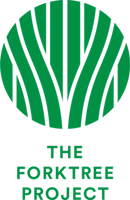Hard Yacca
After 2 days of hard work with a crew of volunteers and an excavator at each end, we have transplanted fifteen 200-year-old Xanthorrhoea semiplanas (a.k.a. tufted grass trees or yaccas) which we discovered were destined for destruction as part of a road-widening project near us.
Frankly it’s remarkable that DEW (Department for Environment & Water) allowed the yaccas to be cleared at all, given how precious and long-lived these plants are (up to 600 years old), but all credit to the road construction crew for helping us move them and to Yankalilla Council for using their vegetation clearance permit to at least save the ones we did at short notice.
Knowing that yaccas are notoriously difficult to transplant, we moved them with minimum disturbance to their roots and with as much of the soil around them as we could. Their new home is in the stand of mature pink gums at Forktree, where they’re planted in the same orientation and in the same amount of shade/sun as they’d been in previousy on the roadside.
We also made up a solution of seaweed and brown sugar to encourage the mycorrhiza (the fungus that supply nutrients to the roots of plants). The brown sugar solution mimics the sugars the plant would have produced by photosynthesis and supplies them to the fungus, and the fungus supplies the plant with mineral nutrients in return. A wonderful symbiotic relationship.
A big thanks to Mark at State Flora for his advice on transplanting the yaccas, although even he admitted only time will tell as to whether the transplantation has been successful. For now, though, they look great; we’ll keep a watchful eye on them and of course keep you updated.







